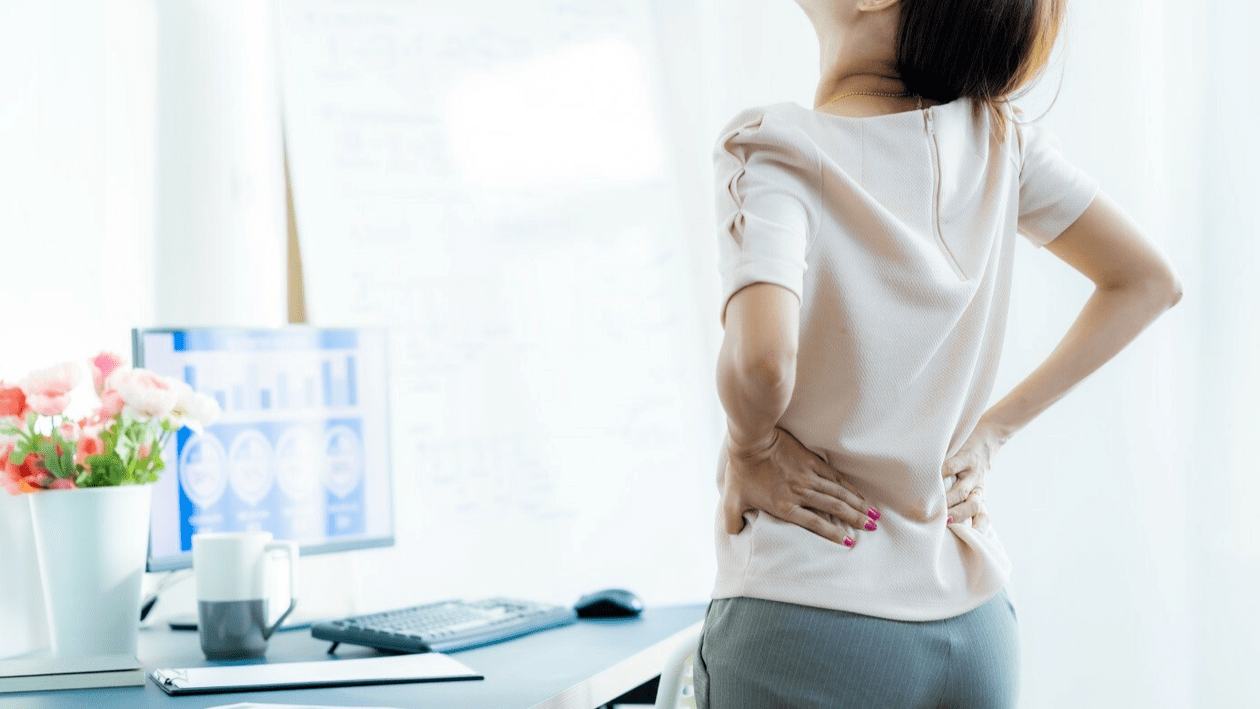
reason
- Frequent lifting of heavy objects;
- Overweight, obesity;
- Endocrine diseases, hormonal imbalance;
- Malnutrition, insufficient intake of vitamins, proteins and minerals;
- heavy genetic burden;
- excessive physical activity;
- Back injuries;
- Postural disorders;
- Joint inflammatory diseases: arthritis, arthropathy;
- congenital spinal anomalies;
- flatfoot;
- Pregnancy, especially multiple pregnancy.
symptom
- Stiffness and tightness in back muscles;
- The sensitivity of the lower limbs is damaged to varying degrees, and there is a crawling feeling of "goosebumps" on the legs;
- Limited spinal movement;
- Gait changes, lameness due to severe back or leg pain;
- leg muscle weakness;
- Axial inflorescence;
- Creaking in the back when bending or turning;
- Urinary and fecal incontinence, or conversely, constipation and urinary retention.
diagnosis
- Opinion polls.The specialist will clarify the complaint, when it occurred and whether it is related to predisposing factors: physical activity, prolonged static postures, sudden movements, hypothermia. He also studies medical documents—doctor's reports and previous test results.
- examine. The doctor examines the skin and spine for obvious lesions, injuries, and deformities. He evaluates gait and limb symmetry.
- palpation. When palpating the spine, the presence of pain, compaction, or deformity can be detected.
- neurological examination. Consultation with a neurologist necessarily includes assessment of muscle strength, sensitivity, and symmetry of tendon reflexes in the extremities.
- General and biochemical blood tests, including assessment of markers of inflammation - ESR and C-reactive protein;
- General urinalysis.
- X-rays in two projections. X-ray images are helpful in assessing skeletal condition, identifying abnormalities in spinal development, detecting established osteophytes and pathological changes in the joints.
- CT. Slice-by-slice CT images allow for a more detailed study of the spine. It can reveal vertebrae, bone growth, and other important defects. A CT scan with venography can show the condition of blood vessels and blood circulation within tissues.
- MRI. The preferred diagnostic method because it allows you to obtain a large amount of accurate information quickly and without radiation. MRI images can show the condition of cartilage, ligaments, discs, spinal nerve roots, spinal cord, and other soft tissues.
Which doctor should I contact?
treat
- age,
- osteochondrosis stage,
- current health status,
- There are accompanying diseases,
- Pregnancy and lactation.
- medical treatement.
The type, dosage, frequency and duration of administration of the drug are chosen by the doctor. Depending on the clinical situation, the regulations are as follows: - NSAIDs.They have anti-inflammatory and analgesic properties. Prescription should take into account the severity of pain and accompanying pathology, particularly of the gastrointestinal tract and cardiovascular system.
- Muscle relaxants.Eliminate back muscle strain and reduce pain.
- Glucocorticoids.Sometimes used for severe pain and inflammation.
In cases of severe pain, drug blockade may be prescribed. The procedure involves injecting painkillers and anti-inflammatory drugs directly into the source of the pain - near the pinched nerve. This can give you quick pain relief, improve spinal joint mobility and the patient's overall health. - physiotherapy.
Physical therapy procedures can improve health, enhance the effects of prescribed medications and accelerate tissue regeneration. For osteochondrosis, the following measures are recommended: - shock wave therapy,
- magnet therapy,
- Laser Treatment.
In order to achieve maximum therapeutic results, a physical therapy course consisting of multiple procedures is required. The doctor individually determines the duration and frequency of physical therapy. - Massage therapy.
Massage is required outside of exacerbation periods. It is performed by a qualified massage therapist, who chooses strategies to affect the body based on medical history. You may feel better after your first treatment, but multiple treatments are needed to achieve lasting results. One of the main advantages of therapeutic massage is its additional effect on the psycho-emotional state. During a massage, endorphins - hormones of pleasure and joy - are released. - acupuncture.
Acupuncture essentially involves a doctor inserting special sterile needles into certain points on the body. They act on active points in the projections of nerve endings that are the source of inflammation and pain. This method helps relieve pain, relax muscles, and improve spinal mobility. - Therapeutic Physical Education (Physiotherapy).
Exercise therapy is appropriate during remission, when there is no acute pain. The purpose of these exercises is to stretch and relax the muscles of the spine, strengthen them and increase the flexibility of the spinal joints. Therapeutic gymnastics increases blood circulation and stimulates metabolism - which improves tissue nutrition. Even at home, regular and appropriate physical therapy can prevent worsening of the disease and the onset of pain. Even during periods of severe pain, bed rest is contraindicated; mobility is mandatory.
result
- Paralysis or paralysis of the lower limbs, most commonly the feet;
- Numbness and crawling sensation in lower limbs;
- Damage to the genitourinary system and intestines.
prevention
- Perform regular physical activities and gymnastics;
- weight control;
- When working sedentary and maintaining fixed postures for long periods of time, warm up once an hour;
- Proper nutrition;
- Visit the swimming pool;
- Yoga and Pilates classes;
- quit smoking and drinking;
- Avoid strenuous physical activity, especially heavy lifting;
- Minimize stress.




























